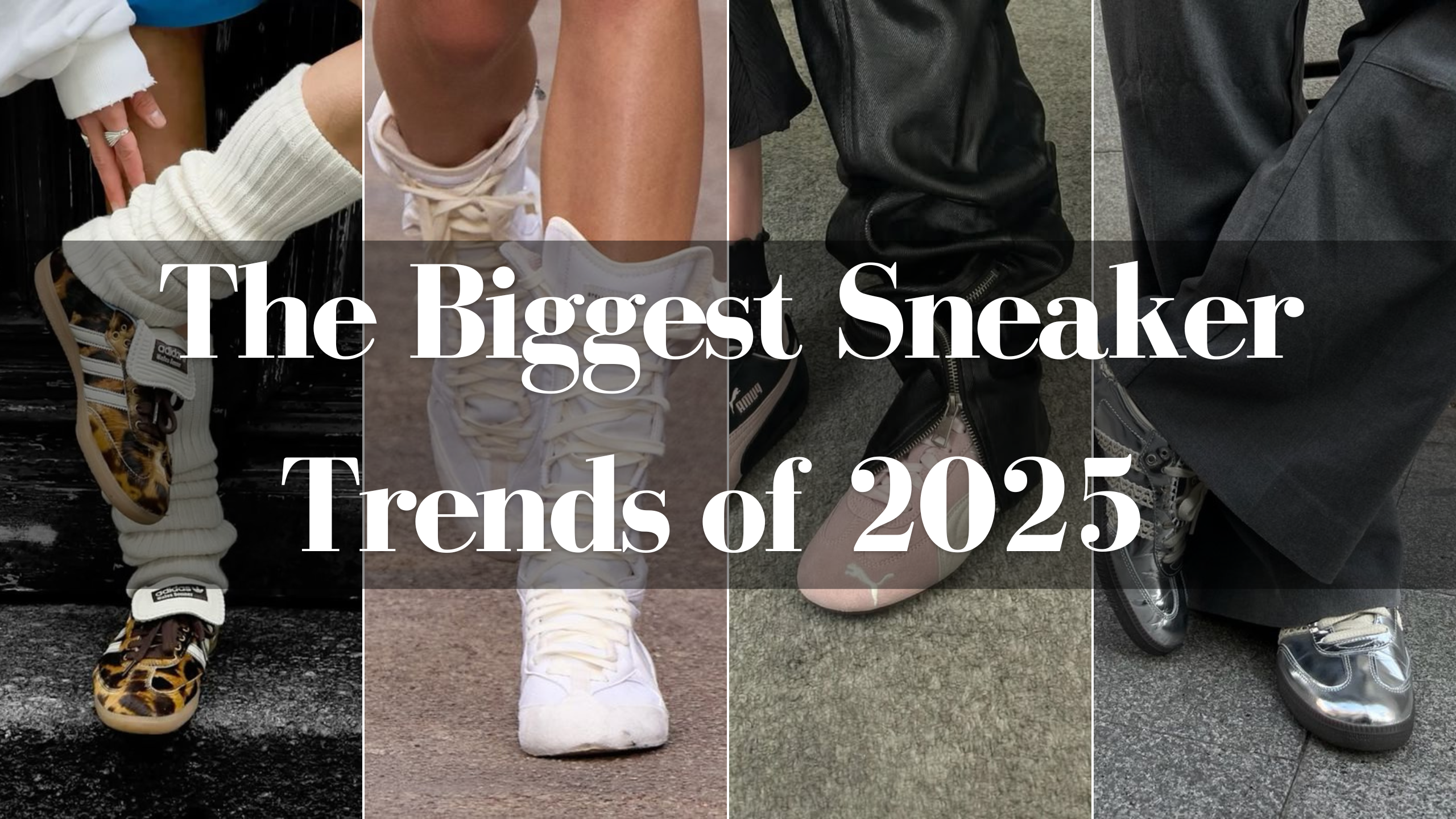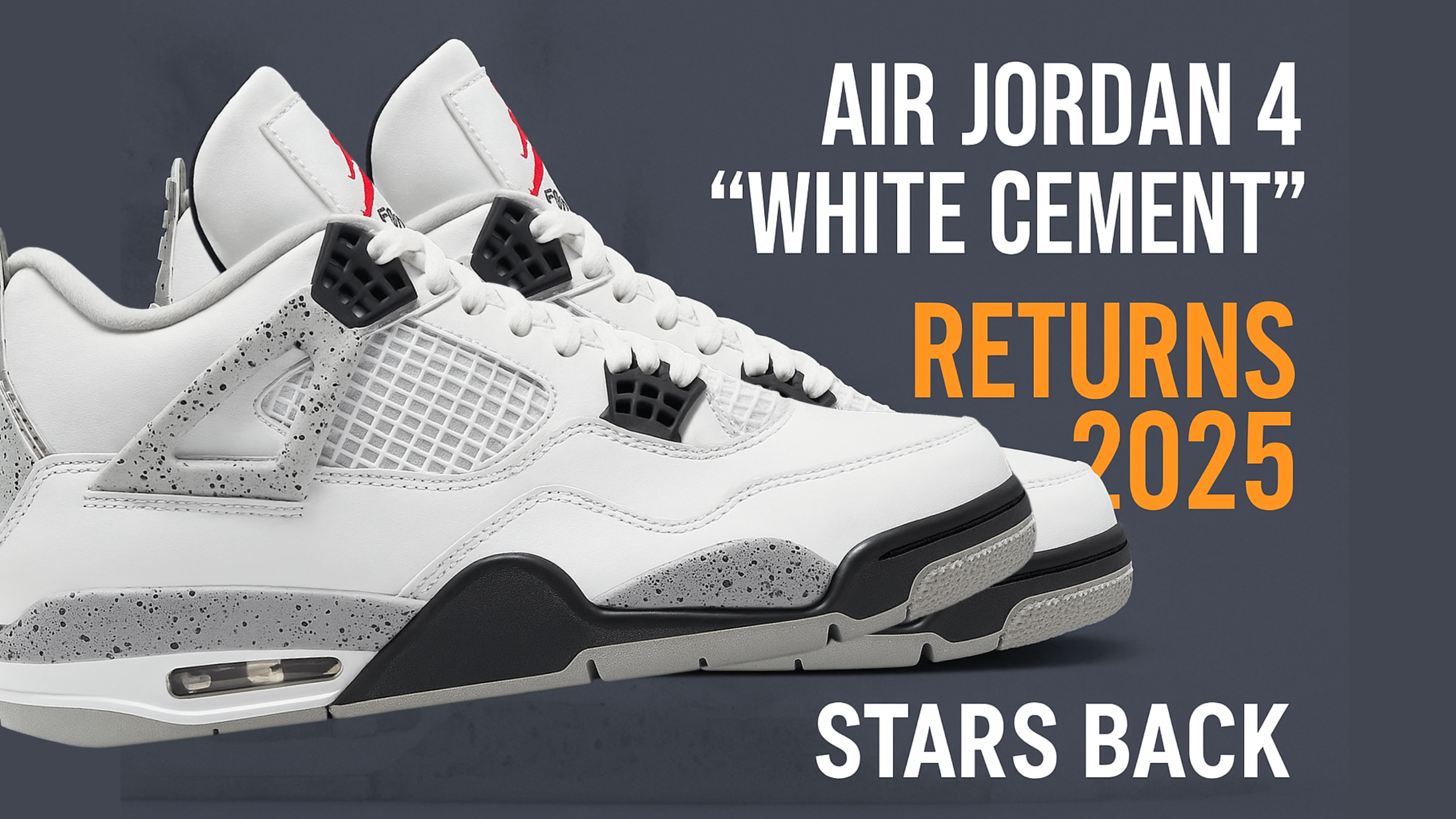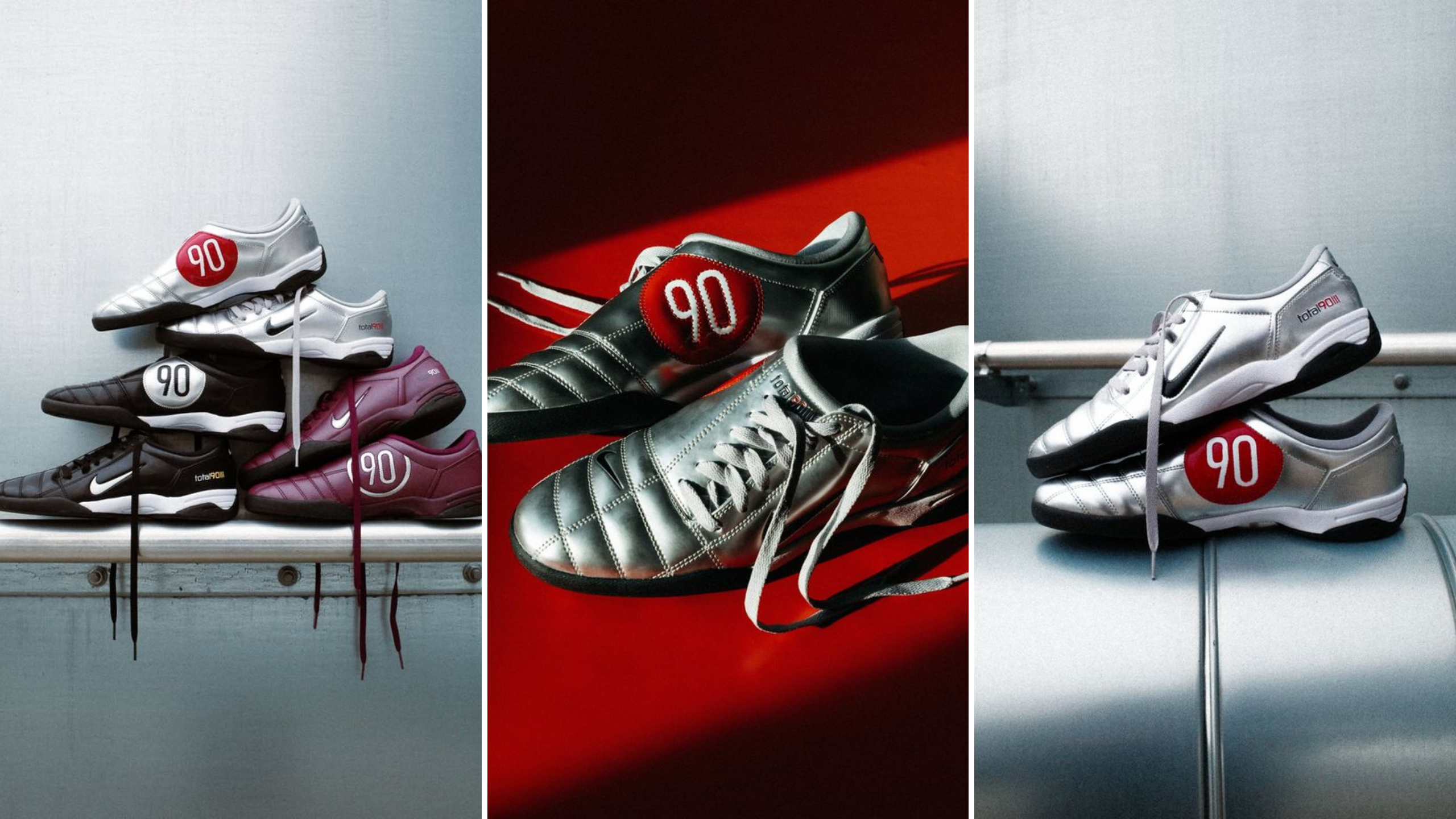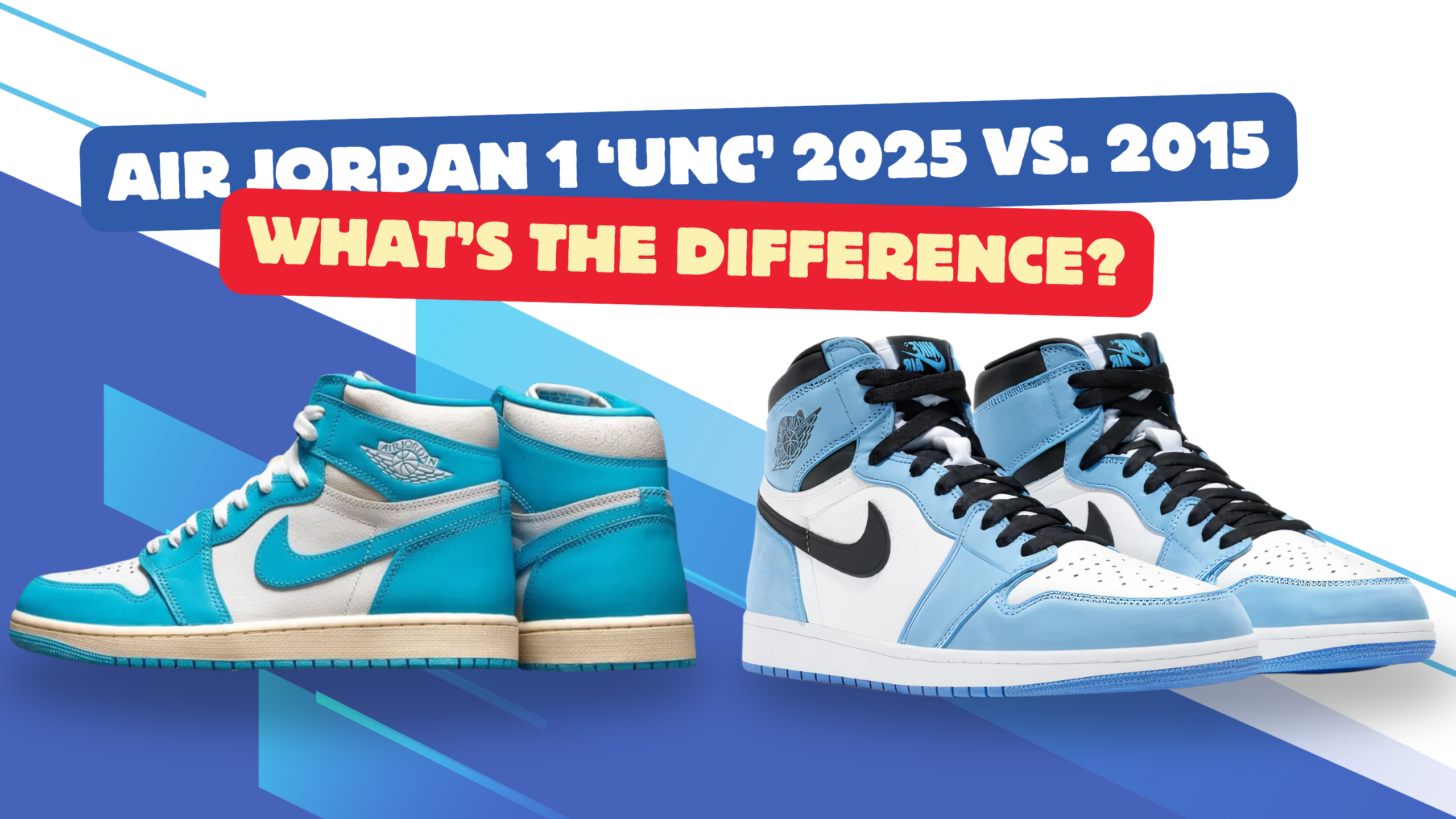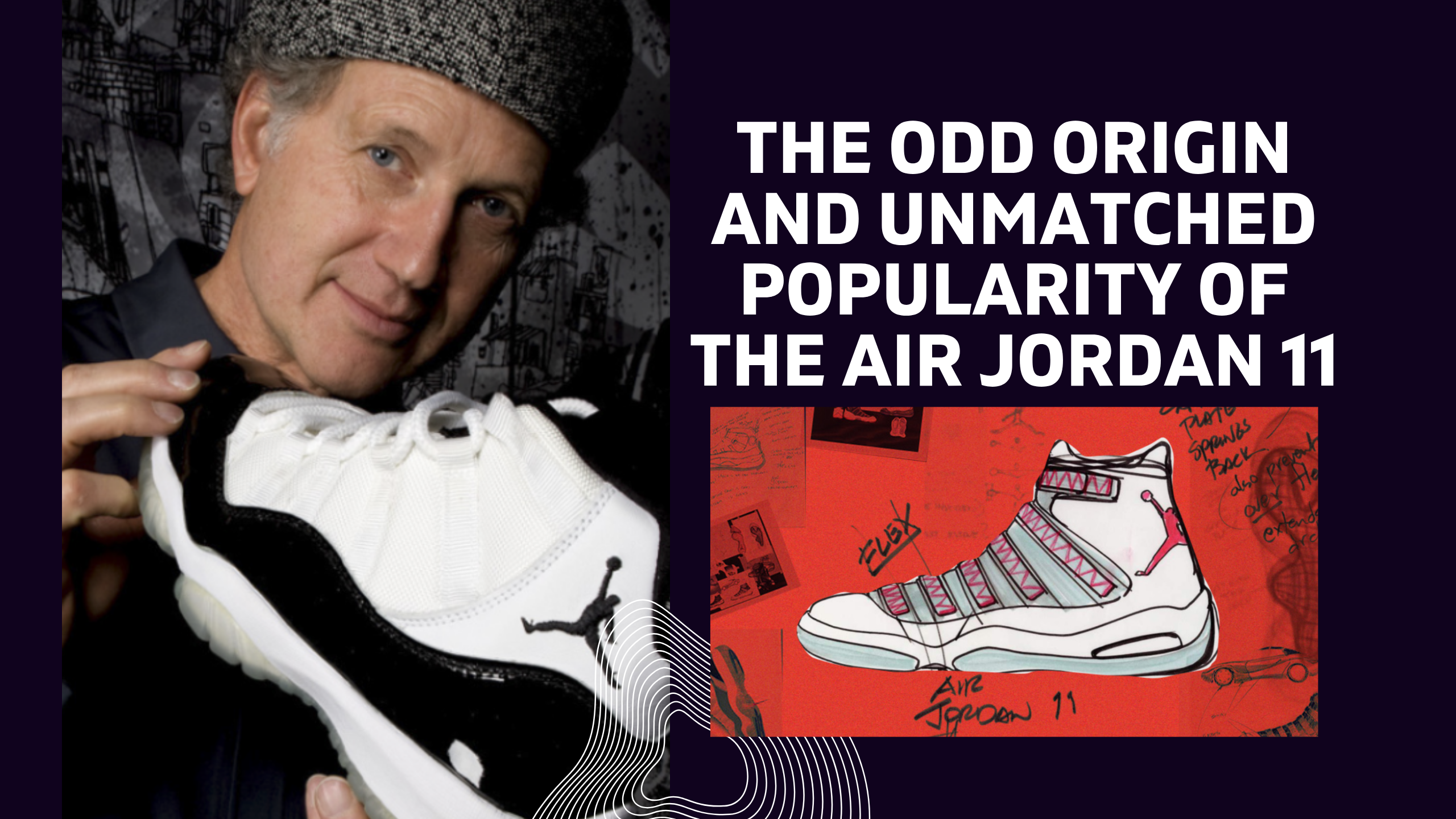
The Odd Origin and Unmatched Popularity of the Air Jordan 11
When the Air Jordan 11 first stepped onto the hardwood in 1995, no one could have predicted that it would become one of the most iconic sneakers in history. Designed by the legendary Tinker Hatfield, this sleek silhouette broke all the rules—featuring patent leather, ballistic mesh, and a design inspired by formal dress shoes. It was bold. It was strange. It was unforgettable.
But what truly makes the Air Jordan 11 a cultural titan isn’t just its unique design or MJ’s unforgettable comeback season—it’s the unmatched loyalty and hype it still commands decades later. From courts to concerts, and holiday drops to resale wars, the AJ11 has earned its place as the crown jewel of sneaker history.
What do you get when you cross a sock and a lawnmower?

The Air Jordan 11 provides an abstract explanation, while the traditional response is a cloud of cotton.
We had to go all the way back to when Mike had hung up his #23 marked crew cuts in favor of the grass cut during spring training in order to reach the socks and lawnmower.
In 1994, Michael Jordan was bussed to batting practice in Birmingham, Alabama, a long way from the hardwood. Only a few months prior, in the fall of 1993, Michael Jordan had announced his retirement from basketball due to burnout from stardom, exhaustion from three consecutive Finals visits, and the grief of his father's premature death. The world was suddenly certain that the greatest basketball player ever touched a basketball was done with the game he made worldwide following an unparalleled news conference and a change in sports.
Except for Tinker Hatfield, everyone.
Hatfield, a renowned designer and former pole vaulter at the University of Oregon, had developed a close relationship with Michael that would change the dynamic between a company and its athletes. Hatfield was ultimately responsible for rescuing the Beaverton brand with the crucial Air Jordan 3. The business that made Tinker billions was convinced that Mike was done with basketball and that his Air Jordan line was destined to be completed regardless of his track record of success, which was emphasized by his ability to follow his instincts.
Indeed, Nike was completely prepared to end the Air Jordan franchise in 1994. The Air Jordan 9 was already in production when Mike retired, but it had a difficult time as MJ was no longer wearing them in NBA games. Its successor would be even worse in terms of sales. When it came to pre-booking pairs, the Air Jordan 10 was completely shut out of Europe upon release, more intended to honor Michael Jackson's achievements than to advance technology.
Given that Mike missed the full 1993–94 season and that Nike was preparing retros to commemorate a decade of excellence and bring back the hits, the Air Jordan franchise was expected to end at an even 10 with no plans to continue.
Tinker had always followed his instincts, but was it wrong this time?

Tinker Hatfield was not intent on stopping, but the line was.
In his episode of Netflix's Abstract, Tinker told an interviewer, "I was bound and determined to keep the line going."
Inspired by faith but also determined to disprove his peers, Tinker created sneakers for MJ to play basketball in because he had a gut feeling that the greatest of all time would return. However, because of Nike skeptics, whom Hatfield publicly called "assholes" in a 2012 interview with Gentlemen's Quarterly, Tinker went rogue and took his work home.
Absolutely incorrect.
Tinker Hatfield is shown in early sketches from August 1st, 1994, looking both inspired and confused. "MICHAEL NEEDS TO BE INVOLVED!" is one of the demands written in all caps, and the queries vary from whether the shoe should be a low top to whether the iconic Wings image should be repurposed. Early notes imply that Hatfield introduced the moniker Jordan Beyond, even though the shoe would be known as the Air Jordan 11.
Hatfield's actions went above office guidelines and norms. By getting away from Nike HQ and designing the Air Jordan 11 in his free time, Hatfield’s crusade created more freedom in his process as the AJ11 was unlike anything Nike Basketball had ever seen before.

Carbon fiber would serve as the AJ11's base from the bottom up. The composite material, which was taken from speed skating and football, is reportedly twice as rigid and five times stronger than steel. When used in practice, carbon fiber was recognized for producing propulsion and torsion. As a result, Hatfield wondered if carbon fiber might help MJ on the court if it could make a wide receiver faster on cutbacks and a rollerblader more explosive in strides. He had to give it a shot.
Tinker took inspiration from his running resume and subtly revealed the technology on the outsole, paying homage to his work with Air on the original Air Max 1 in 1987. Drawing inspiration from another popular design, the 11 would also include a translucent outsole, enhancing the characteristic that was first seen on the Air Jordan 5.

A huge mudguard was made higher up the car to hold in all the more torque produced below. It makes likely that Hatfield drew inspiration for this feature from sports cars and lawnmowers, as both machines employed streamlined exteriors to conceal genuinely explosive and destructive elements.
Flash and function would clash like never before on the mudguard. Mike had been requesting a more dazzling shoe for a long time, according to SLAM star Abe Schwadron. Hatfield once informed Nick DePaula in an article for Sole Collector that MJ had been requesting brighter sneakers for at least three years, so this story has merit.
Following his inspiration, Hatfield created the mudguard patent leather, which turned out to be as sturdy as a work boot and as stylish as a dress shoe. Hatfield stunned MJ once more with the second model intended to keep the line alive, much as he had done with the Air Jordan 3 when he debuted the exotic elephant print to keep Mike at Nike.

There was enough innovation both on and beneath the hood to transform the industry, and it did. But Hatfield had higher ambitions. In order to incorporate stretch mesh and a molded collar on top, he intended for the upper to be laceless, similar to a sock.
Although some models looked like that, the final production model settled for fast lacing and used sturdy, glossy nylons and meshes designed for forward-thinking backpacks.
As the Air Jordan 11 progressed from design to sample, Mike's thoughts shifted from retirement to comeback. Instead of playing as a stand-in during the 1995 Major League Baseball strike, Jordan stunned everyone by rejoining the Bulls on March 18th, confirming Tinker's suspicions. A day later, MJ returned to the court to play against the Indiana Pacers in front of a record-breaking regular-season television audience. It was his first professional game in more than a year.
MJ on her feet? Air Jordan 10.

Despite Hatfield's foresightful efforts to revive the Air Jordan brand during Michael Jordan's baseball hiatus, the Air Jordan 10 was already available and seeing a decline in sales because Mike had not yet worn them.
Mike would wear what was thought to be the final Air Jordan for the final games of the 1994–95 NBA season, with the #45 on his back and the 10s on his feet. He was also expected to wear the 10s for the duration of the Bulls' impending postseason run.
Assumptions were incorrect once more.
After starting the 1994–95 Playoffs in "Shadow" Air Jordan 10s, the anticipation of what was to come was too great to bear, and the weight of donning a shoe that was supposed to commemorate the conclusion of his playing career was just too much.
To the astonishment of the world, Nike executives, and Tinker Hatfield, Mike deviated from the norm in the second round against the explosive Orlando Magic, launching the Air Jordan 11.

The Air Jordan 11 that Mike wore during the playoffs versus the Magic was more of a late-stage sample than a production pair because it was given to him for testing rather than for a debut. Since his teammates were wearing black sneakers, he was breaking the league dress code by wearing a White/Black-Concord colorway with the #45 marking on the heel.
A flashback Once again, the veteran reprimanded the youngster for sticking out in Orlando after the rookie was penalized for not keeping up with his peers during the preseason.
The NBA acted similarly to 1984, preventing the "Concord" 11s from playing for the rest of the playoffs, just as they had done with the "Banned" Ships more than ten years before. When MJ called a friend, he asked Anfernee Hardaway if he could borrow his Flight Ones for a game. He altered his pair by removing the heel tabs that exposed the #1.
Nike, always in control, supplied Mike a pair of "Space Jam" samples to comply with league dress regulations and Mike's requests even though the AJ11 model wasn't yet available for sale.

MJ would return to the number 23 spot in the nights that followed, but the Bulls would lose in the playoffs. An ardent fan following would be eagerly awaiting Mike's new patent leather signature, while the unretired All-Star would be determined to get revenge on the Magic during the summer.
Fans would have to wait a long time because the shoes wouldn't be available in stores until long after Mike made them popular, much like the original Air Jordan 1.
When the new 11s were released in November 1995, they were a huge hit at retail and created a lot of attention for about six months at the time of their debut. This was in stark contrast to the new Jordans' February All-Star debut, which coincided with the new model's release into retailers.

Mike was fascinated by the "Concord" 11s during the whole 1995–96 NBA Season, even though the league didn't like them in the 1995 playoffs because of their color blocking.
The GOAT returned with a record-breaking 72-10 revenge campaign, and the Air Jordan 11 was there to support him throughout. Video evidence showed that Mike was really faster than previously in his new shoes, proving Tinker's wager on him and his carbon fiber foundation correct.
At All-Star Weekend in San Antonio, MJ would make his first appearance at the celebrations since signing off in 1993, and he would also unveil the "Columbia" colorway, making him the toast of the basketball world once more.

Tinker was correct.
Mike and his footwear line were back. With each patent leather release in 1995 and 1996, the Air Jordan 11 sold out. This success would continue into the spring and, more significantly, during MJ's winning streak.
Instead of facing additional NBA fines, Nike created a Black/Red "Playoff" pair for Mike's impending postseason run. On Father's Day, Mike would appropriately win his fourth NBA championship by exacting retribution on the Magic.

The Air Jordan 11 endured the most memorable season in Michael Jordan's legendary career, despite never having been created.
As Tinker states in Driven From Within, "it was all about having faith." "Michael trusted me, and I had this strange belief that he would return."
Tinker's long-held belief was validated by the final product. According to reports from past seasons, Mike would completely ruin his Air Jordans every night, rendering them unwearable after just one game of his intense performance. The Air Jordan 11 isn't.
Ironically, it would be the first sneaker Tinker Hatfield designed during overtime that would also be the first to last Mike the full game on his feet.
The story of the Air Jordan 11 would not stop in the gloomy years of 1994.
The Air Jordan 11 has proven Teflon on the market since that first season, in addition to being durable for Mike on the court. Retirement once again played a role in the story of the Air Jordan 11, since it was one of the first models made available again after his second departure from the Bulls. The Air Jordan 11 sold incredibly well in its first run of original colorways in 1995 and 1996.
Only five years after its original release, the Air Jordan 11 received the vintage makeover in 2000 and once again dominated retail displays. The AJ11's retro success in '00 was exponential, not only for the model but eventually for the entire movement, unlike the reception to the retro release in '94 was lukewarm to chilly, with the temperature and polarity increasing only incrementally on the AJ4 in '99.

The resurrected classics from Mike's inventory were only outdated shoes that were mainly desirable to collectors before the Air Jordan 11 retro run in 2000. Retro Jordans, which were created in 1995, sold out the day of the drop once the 11 was brought back. They even sold for resale in the same mall just moments after they were purchased.
With the 2001 "Cool Grey" version of the Air Jordan 11 competing with the originals in terms of popularity, it was also the first retro release to blow the market away in a new colorway. As an older member of the Washington Wizards, MJ would don the throwback 11 upon his return from retirement, giving younger fans a fresh look to make their own.

As the Air Jordan 11 celebrates its 25th anniversary, it's critical to acknowledge that no sneaker is quite like it. The Air Jordan 11 defied the brand that gave rise to the market it occupied and started the retro revolution that continues into retirement, whereas the Air Jordan 1 defied the market and established a sneaker culture focused around an active athlete.
Since the Air Jordan 11's 1995 retail launch, the shoe has been the go-to present for sneakerheads of all ages and backgrounds for most holiday seasons. Recent releases have shown to be widespread, secure, and easily available, despite some launches being marred by violence and a demand that was sadly unmet.
This has also demonstrated that the Air Jordan 11 is a timeless shoe in any quantity, not just when it is hyped up.

The 2020 Adapt update and the "Jubilee" debut give the Air Jordan 11 something to think about as it prepares to celebrate 25 more years.
From a lifestyle perspective, will fashion surpass the Air Jordan 11 and overtake the original AJ as the ultimate sneaker? Or will it continue to be based on innovation and sports, with the Adapt upgrade serving as the precursor of numerous new generations of hardwood heroes?
Time will tell. But when it comes to the Air Jordan 11, if history has taught us anything, it's to expect the unexpected.
